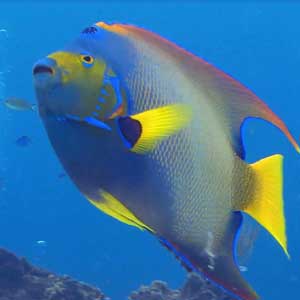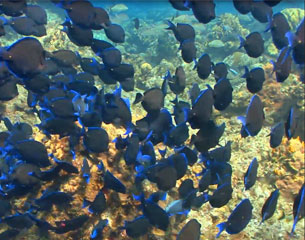Facts about Fish
Posted by Admin / in Science Facts

Fish Facts
What Makes an Animal a Fish?
What makes an animal a fish? Is a fish an animal that lives under the water? Yes, but scientists have additional requirements for an animals to be considered a fish.
- Fish are not a major category of animals. They are under a group of animals known as the Chordate Phylum class. These are all animals that have a doral nearve chord.
- All fish are vertebrate, meaning they all have backbones with individual segments.
- All fish are aquatic, spending a majority of their productive life in the water.
- All fish need oxygen to live.
- All fish have gills that help them to take oxygen out of water for their needs. Some fish, however, may use other means to get additional oxygen.
- All fish have fins.
- All fish do not have scales, although most do. An example of a fish without scales is the catfish
- All fish have a special sensing organ that is located on the side of the fish's head and body called the lateral-line. This organ helps fish sense water pressure around them.
- Some, but not all fish have a swim bladder. This is an organ that fills with gas to help the fish maintain its elevation in the water. The swim bladder helps fish conserve energy.
- Some fish travel in groups of fish called schools.

Some fish travel in protective groups called schools
Interesting Fish Facts
- The number of fish species in the world in greater than the combined total of mammal, reptile, amphibian and bird species.
- Only about 1 percent of the Earth's surface is covered by fresh water. A whopping 70 percent of the Earth's surface is covered with salt water. Surprisingly, almost half (41 percent) of the known fish species live in fresh water. This may be due to fish more easily adapting to fresh water or the fact that much of the world's oceans are not explored.
- There are fish that can live in both fresh water and salt water. Scientists call this type euryhaline fish. This type of fish can go back and forth during their lifetime and survive in water with differing amounts of salt.
- How fish breathe underwater - Fish use their gills to pull oxygen out of water. Gills contain a thin layer of cells with grooves. The grooves maximize the surface area. Fish draw water into their mouth. Water passes over the cell walls where oxygen is extracted into the fish's blood. The fish also releases carbon dioxide into the water during this process. Fish can open and close their mouth while they swim to force water through their gills. When fish are still they must open and close their mouth and use the muscles around their gills to force new oxygen-rich water through.
- There are fish that get extra oxygen from the air. When the oxygen in the water is low, some fish can capture the oxygen out of the air. If you see a fish moving their mouth at the water surface in what looks like they are kissing the top of the water, they may actually be getting more oxygen for their body. Some fish have receptors in their mouth or throat to gather additional oxygen when the oxygen-level in the water is low. The African Lung Fish is a type of fish that can breath air. Other air-breathing fish include the bowfish, mudfish and tarpon.
- Some fish such as electric eels, torpedo rays and electric rays are able to send out pulses of electricity. These fish use the electricity like radar to detect objects around them and to communicate with other eels or rays. Electric eels and rays can also use their electricity to stun or kill their prey or as a defense. Although a single electric eel cannot kill a person with their electrical charge, there are cases of a group of electrical eels killing people. Scientists have found over 500 species of fish that generate significant amounts of electricity.
- Fish need to survive in water. Unlike air, water is very dense. Being in water requires much more effort to move around. The force resisting movement through water is called drag. Fish have streamlined bodies to help them move through the water. Scientists have studied fish to maximize designs of cars and airplanes to reduce drag. This is very important to improve speed and energy efficiency.
- Amazingly, the fastest fish is about as fast as the fastest land animal, the cheetah. The sail fish can swim up to an amazing 68 miles per hour (109 kph).
- The largest fish found in fresh water is the beluga sturgeon. Beluga sturgeon can grow to a weight of 1500 kg (3300 pounds) with a length of 9 meters (almost 30 feet).
- The largest fish found in salt water is the whale shark. Similar to whales, whale sharks are filter feeders, eating small fish, krill and shrimp. Whale sharks are known to grow to a length of 15 meters (50 feet).
